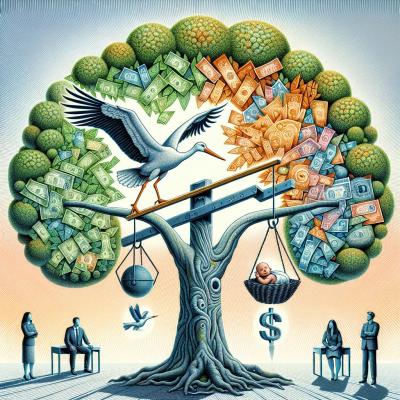Acknowledging these economic forecasts, Treasurer Jim Chalmers stands by the assertion that the escalating debt figures are effectively tempered by the government's prudent fiscal management strategies. Chalmers, steadfast on Sky News, accentuated that the nation's economic leadership has enabled considerable savings in potential debt, with an estimated $80 billion in interest repayments spared over the forthcoming decade.
Financial documents from the 2023-24 budget scorings delineate an expectation for government gross debt to climax by June 2026. This projection takes into account the total government borrowings against assets, indicating a net debt increment to $575 billion in the current financial annum.
Expenditures for servicing this debt are on an upward trajectory primarily due to prior budget deficits and global interest rate hikes. Chalmers leverages historical critique of the opposition's fiscal choices during his tenure, underscoring a suboptimal value return on past governmental spending.
In groundbreaking announcements, Chalmers also revealed the costing earmarked for the integration of superannuation with government paid parental leave, asserting the proposal’s execution date as of July 1, 2025. Envisioned to be a financial endorsement for future parents, this policy positions itself as critical in ensuring superannuation entitlements during leave periods, thereby bolstering familial economic resilience.
The proffered scheme is predicted to necessitate an annual funding allocation slightly above $600 million subsequent to the initial outlay spanning four years. In comparison, prior calculations anticipated a drastically lower figure, but these did not account for increments to the superannuation guarantee nor the extended duration of paid leave.
Emphasizing the initiative's heightened impact on women, Chalmers draws attention to the amplified superannuation gaps resultant from parental leaves. Concurrently, broader budgetary measures aim to underline family support, captivating interests ranging from early childhood education investments to addressing domestic population growth trajectories.
Despite surges in fuel prices nudging the national conversation towards temporary relief through cuts in fuel excise, Chalmers unequivocally positions the budget's focus away from such transient solutions. The rationale leans towards alternative supports that tactfully alleviate cost-of-living strains without hefty impacts on the fiscal bottom line.
These fiscal narratives find their counterpoint as shadow treasurer Angus Taylor iterates the urgency for reducing budget spending and reinvigorating prior fiscal rules set during the Howard government to ensure economic growth outmatches governmental disbursements, spotlighting concerns for inflation curb fails.
Come the anticipated federal budget announcement, eyes will undoubtedly assess the alignment of these fiscal pursuits with the diligent balance of supporting Australians whilst responsibly harnessing inflationary forces.
Published: Monday 13th May, 2024
Last updated: Monday 13th May, 2024
Please Note: If this information affects you or is relevant to your circumstances, seek advice from a licensed professional.










